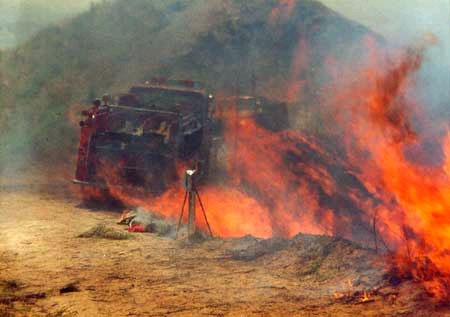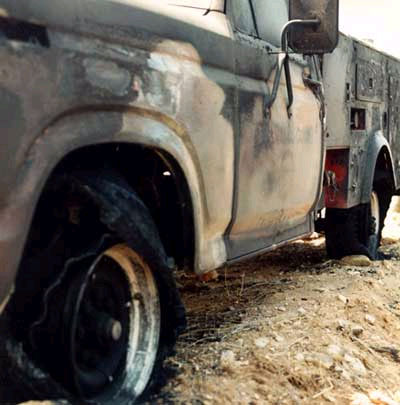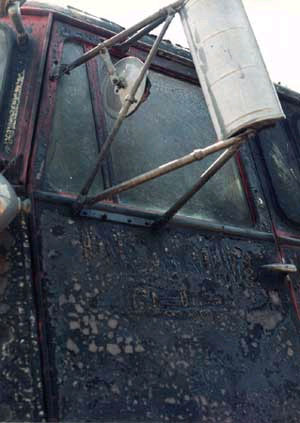
Surviving
Fire Entrapments
Test Results
Also read about engine entrapment incidents:
|
 |
Surviving
Fire Entrapments
Comparing Conditions Inside
Vehicles and Fire Shelters |
Discussion
This project's primary purpose was to gain quantifiable data on conditions
in engine cabs and fire shelters under identical, real-life conditions.
However, we made a number of qualitative observations that are relevant
to survivability in an entrapment. They include:

Figure 26-When a fire comes up a steep sideslope, it appears to go over
and under the engine, creating an eddy on the back side that draws heat
and flame.
- Video footage shows that a large volume of smoke seeps into the engine
cab, even when the cab's windows are tightly rolled up. This occurred
under low-temperature conditions when the cab might appear to be survivable.
- When the outside doors of an engine cab are subject to high radiant
heat loads, the petroleum-based plastics and sound-deadening materials
in the door panels and dashboard volatilize. The smoke generated by
this volatilization may cause both short-term and longterm health effects
on firefighters without respiratory protection, and will create conditions
that force them from the cab into the fire area.
- During the moderate-intensity, shortduration exposure of the Los Angeles
County tests, exterior components of the engines either caught fire
or experienced some melting (Figures 27 and 28). Under higher intensity
or longer duration exposures, the engine could catch fire and continue
burning when conditions outside would be harmful to a firefighter attempting
to leave the engine.

Figure 27-Items on an engine's exterior may catch fire during moderate-intensity,
short-duration fires.

Figure 28-Items on an engine's exterior may catch fire during moderate-intensity,
short-duration fires.
<<< continue
reading—Surviving Fire Entrapments, References >>>
|
